Six dams planned in vision for the north
The PM has been handed a scientific blueprint to transform northern Australia into the nation’s “next great food bowl”.
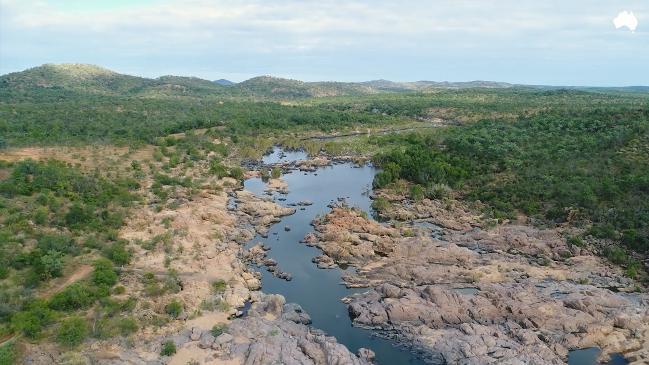
Scott Morrison has been handed a scientific blueprint to transform northern Australia into the nation’s “next great food bowl” that will underpin a push to attract investment for up to six new dams, a move that promises to turbocharge regional economies and win over rural voters.
The benefits of greater agricultural development could lead to the creation of 15,000 jobs and generate $5.3 billion in economic activity throughout northern Australia each year, including an annual boost to Darwin’s economy of about $2.6bn.
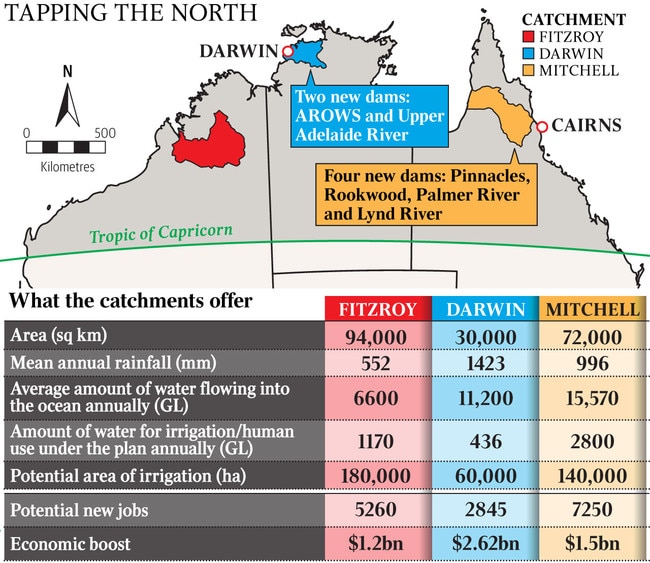
CSIRO research, to be unveiled today, has identified the potential to develop 370,000 additional hectares for agricultural crops — including sugar cane and cotton — as well as 710,000ha of suitable coastal land that could accommodate new lined aquaculture ponds.
The landmark scientific analysis will energise the Nationals, who have championed the construction of dams as part of a nation-building project with the power to unlock the economic potential of the north and harness growing demand in Asian markets.
Deputy Prime Minister Michael McCormack told The Australian yesterday the Coalition would use the CSIRO findings to leverage investment for new water infrastructure projects — including dams — in the lead-up to the next federal election.
“The Coalition stands ready to develop this with anybody who wants to come forward and work with us,” the Nationals leader said. “We want to make sure that it gets carried forward. We’ll be campaigning on it for sure.
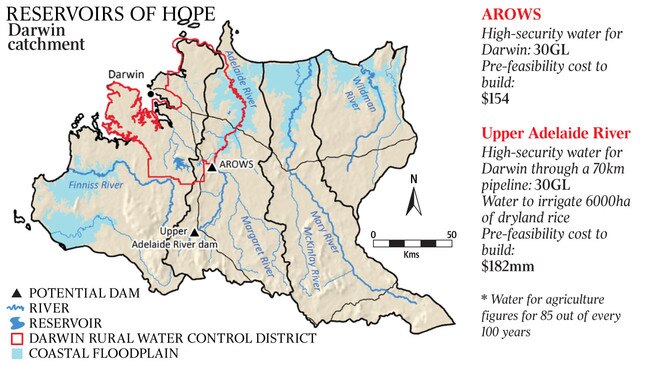
“I note from my reading of history that when explorer John Oxley ended up on the barren wasteland which is now the Murrumbidgee Irrigation Area in the 1800s, he described it as an area in which no man would ever want to set foot on. But now, just add water and it’s one of the great food and fibre bowls.”
The CSIRO study is the result of more than 2½ years of work by a team of more than 100 scientists who conducted the most ambitious survey of water and soil resources undertaken in northern Australia. “Northern Australia water resources assessments” identified the best catchments for potential irrigated agriculture development in the Mitchell (Queensland), Darwin (Northern Territory) and Fitzroy (Western Australia) river catchments, including six potential dam sites.
The potential economic boost would be $1.5bn in the Mitchell catchment area, including 7250 jobs; $2.6bn in the Darwin catchment area, with 2845 jobs; and $1.2bn in the Fitzroy catchment area with 5260 jobs.
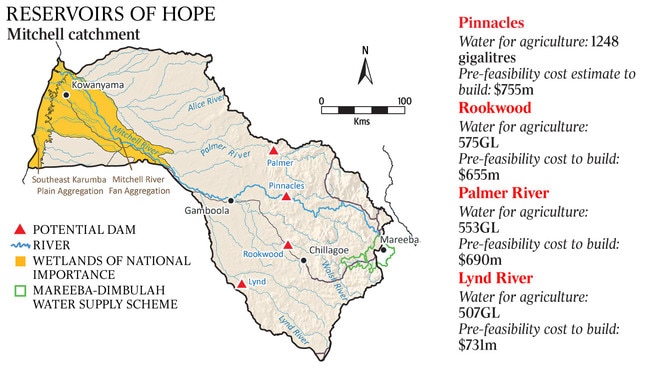
The three catchments cover an area spanning 196,000sq km — almost the size of Victoria — with each offering the prospect of an irrigation development exceeding the scale of the lower Burdekin in northern Queensland.
On their 600ha irrigated mango farm outside Darwin, Ian Quin and Tou Ruchkaew welcomed the prospect of more Top End water storage, but said governments needed to address other factors before businesses could make use of the extra water.
“Our No 1 problem is labour, particularly casual labour,” Mr Quin said. “We need a multi-year, multi-entry casual visa that allows us to draw from whatever country we choose.”
Minister for Northern Australia Matt Canavan said the CSIRO report gave a green light for the construction of the “next great food bowl in our nation”.
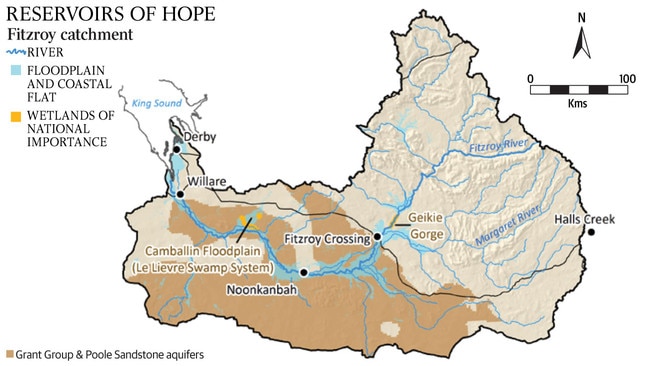
He noted the Pinnacles dam site — if developed — would be the largest in Queensland. “It would deliver enough water in most years to fill Sydney Harbour more than two times and irrigate an area the size of two times the Burdekin and almost 10 times the size of the Ord,” Senator Canavan said.
“This information should lead every government to hasten towards this opportunity. We have growing demand for food in Asia, abundant soils and water, and it’s time for our country to once again take on a large agricultural nation-building initiative.”
CSIRO project leader Chris Chilcott said the study provided “unprecedented data” for northern Australia’s development and provided investors with enough information to “de-risk” a financial commitment to a large-scale infrastructure project.
“It has delivered what those investors need in order to determine the nature and scale of opportunity for agriculture and water resource development in these areas,” Dr Chilcott said.
In the Mitchell catchment area, which lies in the marginal Liberal seat of Leichhardt, the CSIRO concludes that four large instream dams could deliver about 2800 gigalitres of water — enough to irrigate 140,000ha of sugar cane — in 85 out of every 100 years.
The potential sites for dams include The Pinnacles site on the Mitchell River, the Rookwood dam site on the Walsh River, and sites on the Palmer and Lynd rivers. Pre-feasibility cost estimates provided by the CSIRO suggest that if all were to proceed, the construction bill would amount to $2.8bn. Off-stream water harvesting in the catchment could extract 2000GL, with an 85 per cent reliability rate — enough to irrigate 200,000ha of a single dry-season crop such as cotton.
Ahead of the 2016 election, the Coalition pledged $2.5bn to build water infrastructure to “strengthen the agricultural sector and drive regional jobs and growth”.
Asked this month if more dams should be built throughout the Fitzroy region, Bill Shorten said there was a need to “get more efficiency out of irrigation channels”.
NT Farmers chief executive Greg Owens said “big dams on iconic rivers like the Daly, Roper, Mary or the Fitzroy in WA are not needed and will cause major environmental impacts that no one in the north wants”.
“Innovative solutions, such as wet-season harvesting of peak flood events, off-stream capture, capture of overland or small tributary flows where they are shown to have minimal effect on the environment are techniques that need to be investigated and trialled,” Mr Owens said.
The CSIRO also examined the potential of two dams being built in the Darwin catchment, including the Adelaide River Off-Stream Water Storage facility and the Upper Adelaide River Dam. The CSIRO found that in the Darwin catchment, a combination of major dams, farm-scale off-stream storages and groundwater could support up to 90,000ha of dry-season horticulture and mango trees. The Fitzroy catchment had the potential to support 160,000ha of a single irrigated dry-season crop in 85 of every 100 years.
Additional reporting: Amos Aikman





